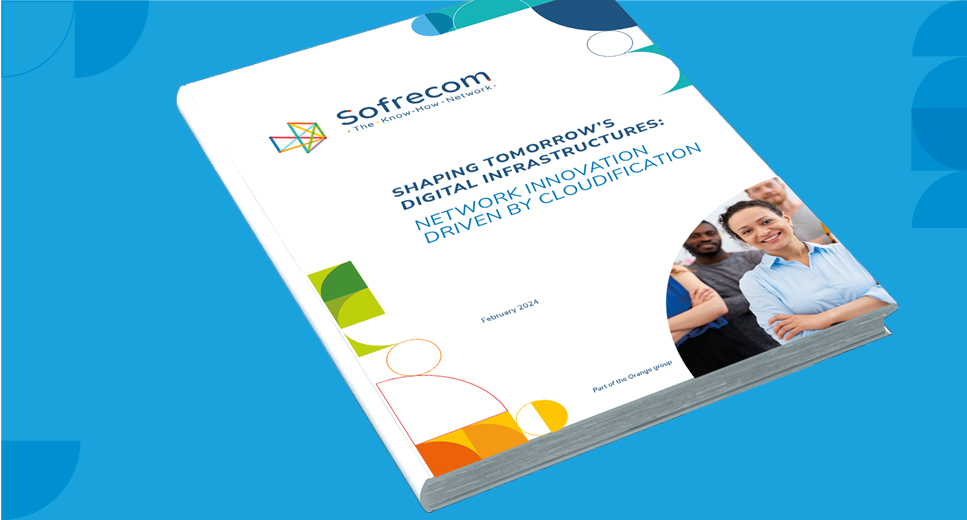
The virtualization of the operation and supervision servers of radio equipment will constitute the first step in the movement of cloudifying RAN architectures. Beyond the benefits it will offer to operators, it leads them to anticipate a change in the model.
The OSS (Operating Support System) functions serve as the foundation of operational activities for operators’ radio networks. They facilitate remote management of all network operation and supervision tasks, including configurations, performance monitoring, fault management, and security.
This encompasses transmitting alarms to supervision centers. OSS functions are software applications developed by major RAN equipment vendors such as Ericsson, Nokia, Huawei, ZTE, and Samsung. These applications run on dedicated physical servers to which they are coupled. A data center typically hosts several of these servers— such as the MantaRay NM/NetAct server suites at Nokia or the ENM server at Ericsson— which have significant computing and storage capacity. The OSS, spread across an entire national territory, each manage several thousand radio sites
and, thus, a large volume of databases.
Expected benefits for operators
Transitioning from the current setup (known as bare metal, which relies on dedicated physical servers) to a cloud-based approach using shared standard servers shows significant potential for operators. Some of which include:
• Moving to the cloud will liberate them from the hardware roadmap dictated by equipment vendors. The routine software updates provided by suppliers often require upgrading the associated hardware, which poses a challenge.
• Utilizing a single server for both OSS and other applications concurrently streamlines server usage, optimizing the invested CapEx.
• The capacity to continuously develop a multitude of new features seamlessly for customers will improve agility and, most importantly, accelerate time-to-market.
However, several steps must be taken before fully realizing the advantages of cloud adoption.
A Financial investment challenge
Transitioning to the cloud poses a significant challenge in terms of capacity scaling for computing and storage. The existing software components of OSS, which are already numerous, will be augmented by the virtualization layers required for the cloud. These layers require extra computing capacity, leading to the need for additional servers and
consequently a notable rise in costs compared to bare metal solutions.
Dealing with this cost overrun presents a genuine challenge in the decision-making to invest in cloud adoption. It will demand that the infrastructure supporting cloud solutions developed by operators adjusts to these constraints and harmonizes with the offerings of equipment vendors and providers of virtualized infrastructure software. Both
operators and OSS Cloud software providers ‘As-a -Service’ must take into account the comprehensive cost implications of virtualized infrastructure.
An organizational challenge
Before proceeding with investment, the operator must comprehensively address the organizational challenges associated with transitioning to the cloud. It will be necessary for the organization to incorporate the various roles and develop the skills required to manage activities previously handled by the equipment vendor including system management, software updates, cloud infrastructure expertise, and cloud security expertise.
For each of these new activities, the operator needs to assess potential integration alternatives and the corresponding financial considerations. For example, concerning the software update process, which is expected to grow with the increase in servers: should they maintain a validation team for an annual upgrade project spanning several weeks,
as done previously? Or establish a dedicated team consistently involved in development and validation throughout the year?
A business model in the making
Furthermore, resolving the financial equation appears intricate without integrating some degree of automation into the processes. Developing this automation alongside the Cloud project poses an additional challenge and a substantial optimization effort. The solution likely involves strengthening agile management practices to incorporate the
multitude of roadmaps.
Additionally, cloud hosting offerings need to be flexible and tailored to this ongoing development. Software validation activities may not always result in reaching a «Go for rollout» milestone, but rather in implementing necessary fixes as required. This entails improving interface/API functions for test automation. Equipment vendors will need to
offer OSS software that meets these requirements.
The cloudification of OSS represents a significant shift in the model. Advancing stepby- step appears to be the most suitable approach for addressing the financial and organizational challenges facing companies. It is important to begin by introducing cloud OSS in limited geographic areas and establish the necessary organizations and skills before taking the big leap, in a few years, towards the virtualized renewal of current equipment.




